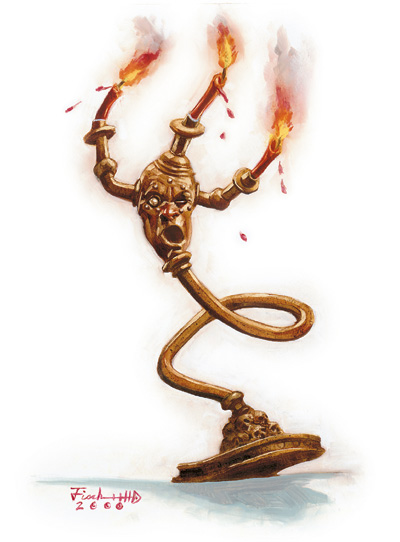Animate Object Dnd 5e
- Dnd 5e Character Sheet
- Dnd Animate Objects Daggers
- Dnd 5e Races
- Animate Object Dnd 5e
- Animate Object Dnd 5e Generator
- Animehd47 One Piece Dub
- Armor Class: An object’s Armor Class is a measure of how difficult it is to deal damage to the object.
- SRD Rules Reference for Dungeons & Dragons 5th Edition. Check out our other SRD sites! Traveller SRD Swords and Wizardry SRD 5th Edition SRD Dungeon World SRD 13th Age SRD d20HeroSRD The Modern Path SRD d20PFSRD 3.5e SRD GumshoeSRD FateCoreSRD Starjammer SRD OGN Articles Design Finder 2018 Fudge SRD Here Be Monsters d20 Anime SRD PF2 SRD.
Over on Nerdarchy the YouTube channel, Nerdarchists Dave and Ted discussed a killer combo for fifth edition Dungeons & Dragons. Using poison coated daggers and the animate objects spell a character could drop some serious damage (and serious coin) with the right kind of poison. In the video they mention several varieties of poison from the 5E.
Dnd 5e Character Sheet
So far, I’ve largely neglected constructs, except for my post the other day on golems. Constructs are different from other monsters, because they’re explicitly not evolved creatures—they’re magical creations, usually from inanimate objects. This means they can behave in whatever manner their creators want them to. (Within limits.)
But if you were creating an animated object, you’d still want it to function in the most effective manner it can, given the traits you’ve imbued it with, wouldn’t you? So I’ll examine these constructs as if they were evolved creatures after all.
Animated armor is uncomplicated: it’s a melee fighting robot, more or less. It has no ability to distinguish between opponents, no ability to adapt, and no self-preservation instinct, so it will fight until it’s destroyed.
But there is room for some flexibility here: its Multiattack states, “The armor makes two melee attacks.” As always, in fifth-edition Dungeons & Dragons, it pays to read the rules absolutely literally. For instance, on the facing page of the Monster Manual, the solar’s Multiattack reads, “The solar makes two greatsword attacks” (emphasis mine). It specifies the kind of weapon the solar must use when it attacks more than once on its turn. But the animated armor’s Multiattack specifies only two melee attacks. Grappling and shoving are both melee attacks that can substitute for one attack in an Attack action—or a Multiattack action.
So let’s ask which is better: to make two slam attacks, or to attempt to shove an opponent prone, then make a slam attack, potentially with advantage?
We have to start with the null hypothesis that shove/slam is no better than slam/slam. After all, while shoving the opponent prone does offer advantage—i.e., the opportunity to make two attack rolls and choose the better one—slam/slam lets the animated armor make two attack rolls as well, with the additional possibility that both attacks may be hits. Shove/slam, in contrast, can produce no more than one.
Shoving involves a contest between the attacker’s Strength (Athletics) and the target’s Strength (Athletics) or Dexterity (Acrobatics). The animated armor has no Athletics skill, and its Strength is above average but not exceptional. So it makes sense to use this attack only against opponents with low-to-average Strength and low-to-average Dexterity. Who’s likely to fit that profile? Supporters, probably—clerics, druids, bards. Certainly not front-line fighters, slippery rogues or long-range spellcasters. And we’ve already established, based on the animated armor’s lack of intelligence, that it can’t differentiate between targets. So unless it’s under the direct control of its creator, it’s not going to be able to execute a mode of attack that depends on the class of the target.
Similarly, if a target has a high armor class, the animated armor’s slam attack might have a low chance to hit, and it might be worth it to try to knock the target prone first. But again, the animated armor can’t tell what a target’s AC is, unless it’s given commands that are simultaneously very specific and very broad, e.g., “Shove standing trespassers wearing metal armor.” This is the full extent of the complexity a suit of animated armor can handle—under a generous interpretation of its capacity for independent judgment.
That means that if we want to establish a rationale for shove/slam, we have to look for it not in its likelihood of success but in the payoff of its succeeding—that is, of knocking the target prone. What could increase the value of this condition? How about having lots of allies that could also attack the prone target? Imagine a gallery in a haunted castle, with a hall lined with suits of armor on each side, a dozen or so altogether. In a setup like this, shove/slam might begin to yield some benefit. The heuristic would be simple: Is the target standing or prone? If standing, shove/slam. Is the target prone? Slam/slam.
Dnd Animate Objects Daggers
Here’s one other angle: Shoving doesn’t have to knock a target prone. It can also push the target 5 feet. Say, into a pit.
Dnd 5e Races
And one more: Grapple/slam is also an option. Grappling doesn’t offer advantage on attacks, but maybe the animated armor is the minion of some other creature; maybe its assigned mission is not to kill but to capture. In this latter situation, slam/grapple is no better or worse than grapple/slam.

But these are outlier cases. Most of the time, it seems, you’ll want to stick with the simple slam/slam.
Flying swords are an oddity: why on earth would they have proficiency in Dexterity saving throws yet use Strength for attack rolls and damage? I feel like a flying sword, by definition, ought to be a “finesse weapon.” In this case, it would have +4 to hit and deal 1d8 + 2 slashing damage. (If you use this modification, raise the flying sword’s challenge rating from 1/4 to 1/2.)

Animate Object Dnd 5e
Since they have a flying speed of 50 feet and can hover (confirmed in the MM errata), a flying sword will float in the air, out of its targets’ reach (10 feet should do the trick in most cases), swoop down to attack, then fly back up. Targets will get opportunity attacks against it, but that’s an acceptable risk for a construct with AC 17; if enemies are clustered together, however, it will attack from a direction that avoids additional opportunity attacks from enemies other than its target. Beyond this, it has no ability—and makes no effort—to differentiate between targets.
A flying sword has no reason not to fight until it’s destroyed.
The rug of smothering has exceptional Strength, high Dexterity, merely average Constitution and a movement speed of only 10 feet per round, making it an ambush predator that has to strike fast and hard. Its smother attack does no immediate damage but grapples, restrains and blinds its target, then deals damage at the start of the target’s turn.
While it’s enveloping a target, it can’t attack anyone else; meanwhile, all its target’s allies will be attacking it (and hurting the target in the process, since half of all damage done to a rug of smothering passes through to whoever’s inside it). Chances are, that first attack is the only it will ever get.
If you want a cheap laugh, you can have the rug Dash away with its prey inside it (at the dizzying speed of 10 feet per round—not 20, because it’s dragging a grappled victim), try to Dodge incoming attacks, or even Hide behind another piece of furniture. Playing it more seriously, however, the fact that it restrains its victim means that an ally of the rug of smothering, if one is present, can target that victim with a weapon or spell attack and gain advantage on the roll, or cast a spell requiring a Dexterity saving throw to resist, which the victim will have disadvantage on.
Animate Object Dnd 5e Generator
A rug of smothering has no reason not to fight until it’s destroyed.
Animehd47 One Piece Dub
How to format endnotes in word for mac. Next: more constructs.
